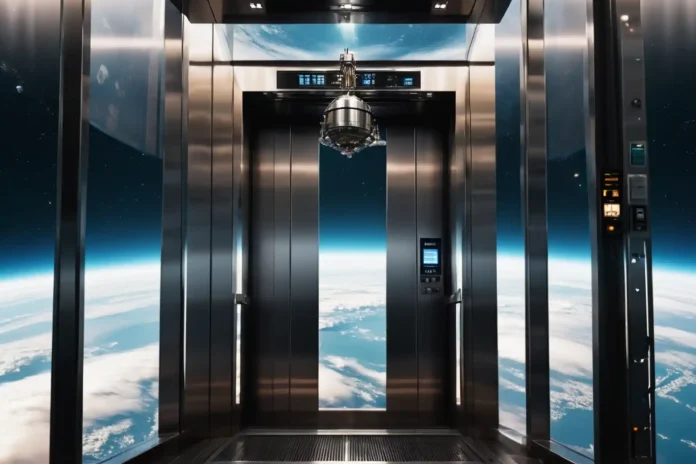Japan has announced an ambitious plan to build a Japan space elevator, an unusual idea that would fundamentally transform space travel. This megastructure, developed by the construction giant Obayashi Corporation, will allow for the cost-effective and sustainable transportation of individuals as well as cargo into space.
A space elevator is based on a connection, which is a massive wire that extends from the Earth’s surface to a geosynchronous orbit (about 36,000 kilometers above the equator). This line would be adequate to support a climbing vehicle capable of transporting both people and cargo to the space station or even further.
Obayashi Corporation envisions a wire made of carbon nanotubes (CNTs). These futuristic materials have excellent strength-to-weight ratios, making them appropriate for such a demanding application. The proposed cable would be 96,000 kilometers long, far exceeding the geosynchronous orbit to allow for the centrifugal force caused by the Earth’s rotation.
Japan Space Elevator Construction Timeline
The construction timeline for this bold project is ambitious. Obayashi Corporation plans to begin construction in 2025, with a projected completion date of 2050. This 25-year timescale highlights the enormous technical challenges that must be solved.
The project’s size alone presents one of the most major challenges. Creating a 96,000-kilometer cable that can resist the harsh atmosphere of space is an extraordinary accomplishment. The cable’s huge tensile strength poses a substantial challenge. Furthermore, the effects of micrometeoroids and space dust pose an ongoing threat to the cable’s safety.
Another big challenge is to secure the space elevator. The structure must be securely anchored to the Earth’s surface and capable of supporting the massive weight of the cable and climbing vehicle. This is expected to involve the construction of a massive platform in the water, which may include components for stability and energy generation.
Check! Doroni Aerospace H1 X Flying Car
How long will it take to reach the space on the elevator?
The Obayashi Corporation anticipates a comfortable and efficient voyage for guests using the space elevator. The climbing vehicle would go up the cable at a controlled rate, taking about a week to reach the space station. This sluggish pace is required to control the enormous g-forces that would be felt during rapid acceleration.
The space elevator has significant advantages over typical rocket launches. Rockets are costly and emit an immense quantity of pollutants. The space elevator, on the other hand, would be a reusable device driven by clean energy sources, making space travel more environmentally friendly and cost-effective over time.
While Obayashi Corporation supported the initial concept, the development of a space elevator is expected to be a global effort. The project’s incredible size and complexity will need worldwide collaboration, bringing together experts and resources from all around the world.
The possible benefits of a space elevator are enormous. It would bring about a new era of space exploration and commercialization. Scientists, researchers, and tourists may all have greater access to space, encouraging innovation and discovery. Furthermore, the space elevator could open the way for the development of space-based solar power facilities that send clean energy back to Earth.
Check! Rolls Royce Nuclear Reactor Ready to Build Moon City by 2030
The Vision of a Space Elevator
The concept of a space elevator has fascinated people’s minds for decades, but it is frequently assigned to science fiction. However, Obayashi Corporation’s proposal moves this fantasy one step closer to reality. While significant obstacles persist, some benefits are obvious. The creation of a space elevator would be a considerable accomplishment, leading to a new era in humanity’s connection with space.
It is essential to highlight that this Japan space elevator is still a growing concept, with numerous technical and financial challenges to solve. However, Obayashi Corporation’s effort illustrates the increasing capability and global interest in developing a space elevator. The next few decades will be important in determining whether this ambitious aim is realized.



